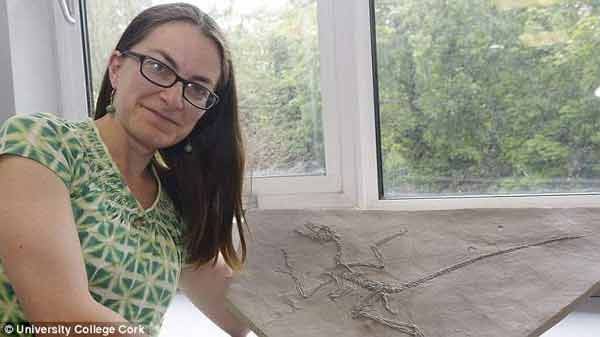Irish scientists have had a major breakthrough in the field of palaeontology – thanks to dinosaur dandruff.
The researchers from University College Cork have studied samples of perfectly preserved dinosaur dandruff and found it is similar to human dandruff.
Both are made of tough cells called corneocytes which are full of the protein keratin. It is the first evidence discovered that shows that dinosaurs shed their skin.

The team, led by Dr Maria McNamara, compared the fossil cells of feathered dinosaurs such as the Microraptor, Beipiaosaurus and Sinornithosaurus to dandruff shed by modern birds.
It showed that unlike reptiles, the birds shed their skin in small flakes rather than as several large pieces or even a single piece.
Dr McNamara said: “The fossil cells are preserved with incredible detail – right down to the level of nanoscale keratin fibrils.
“What’s remarkable is that the fossil dandruff is almost identical to that in modern birds – even the spiral twisting of individual fibres is still visible.”
The study could help researchers add more detail to the timeline of evolution of dinosaurs, with the process of skin shedding in flakes believed to have begun to develop around the late to middle Jurassic period.
Several other skin features evolved during this time period.
Dr McNamara added: “There was a burst of evolution of feathered dinosaurs and birds at this time, and it’s exciting to see evidence that the skin of early birds and dinosaurs was evolving rapidly in response to bearing feathers.”
Professor Mike Benton, from the University of Bristol’s School of Earth Sciences co-authored the paper.
He said: “It’s unusual to be able to study the skin of a dinosaur, and the fact this is dandruff proves the dinosaur was not shedding its whole skin like a modern lizard or snake but losing skin fragments from between its feathers.”
For more information read Dr McNamara’s study which was published in the journal Nature Communications
Written by Michael Kehoe @michaelcalling